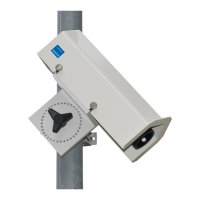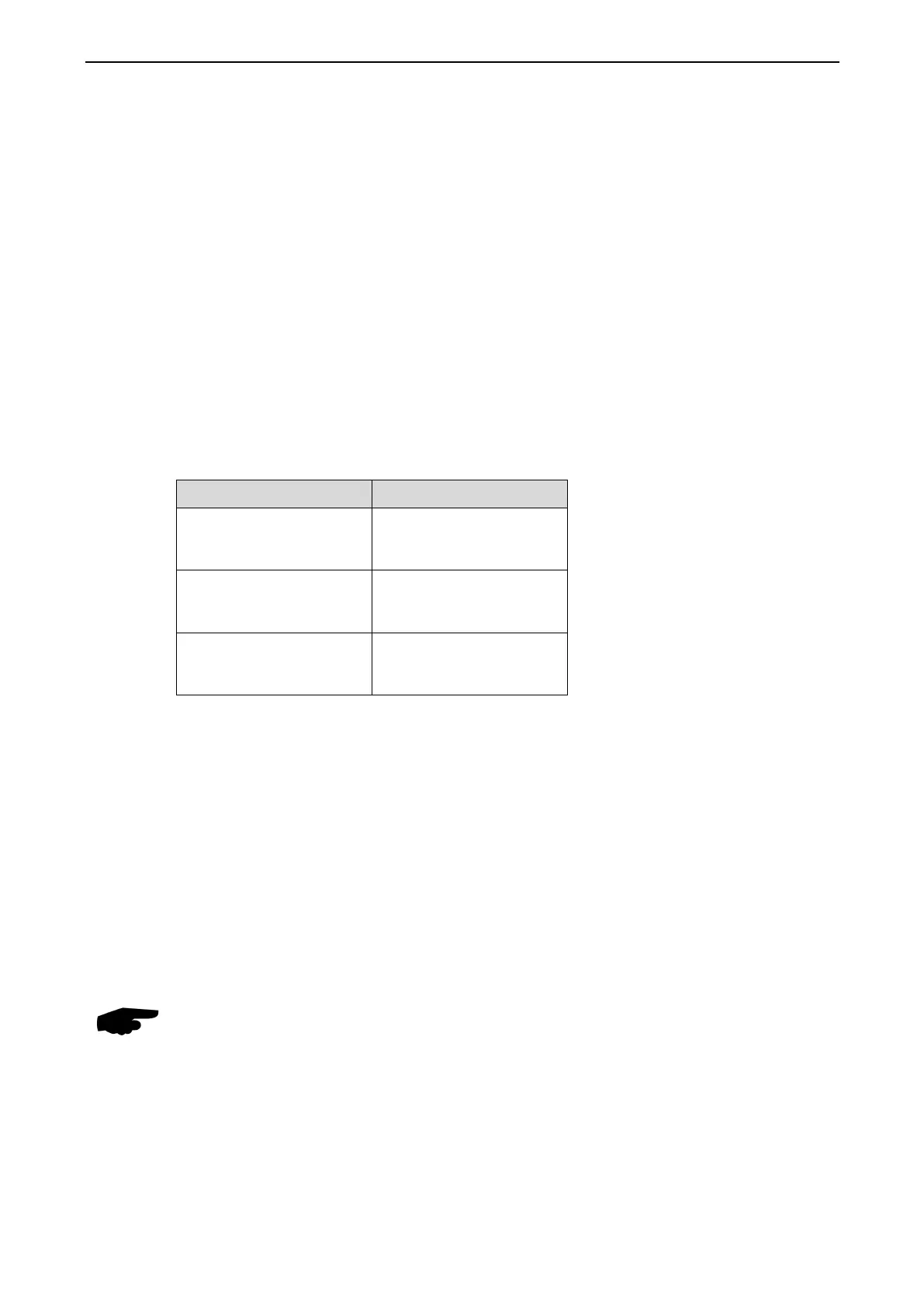Communication in SDI-12 mode
44 Snow depth sensor SHM 31, V2.1
Due to the measurement methods used, the SHM 31 sensors always measure continuously,
unlike
the standard sensors described in the SDI-12 documents. As a result, this operating mode has
some special features:
The device does not need to be ‘woken up’ and does not have a sleep mode.
Data retrieved with M or C commands is always available immediately. The device always
responds with a000n or a000nn respectively. This means that the device does not send a service
request and ignores signals to cancel the measurement. The master should retrieve the data
immediately.
10.
5. Setting the address
The UMB device ID and the SDI-12 address are connected to one another. The different address
ranges have to be taken into account in this regard, as must the fact that the UMB addresses are
numbers and the SDI-12 addresses are ASCII characters. The SDI-12 address is therefore
derived from the set UMB device ID as follows:
UMB device ID 1 (default) corresponds to SDI-12 address ‘0’ (SDI-12 default).
Changing the SDI-12 address with the SDI-12 setting command also changes the UMB device ID
accordingly.
UMB (dec) SDI-12 (ASCII)
1 to 10 ‘0’ to ‘9’
11 to 36 ‘A’ to ‘Z’
37 to 62 ‘a’ to ‘z’
Table 4: SDI-12, permissible address ranges
10.6. Measured data telegrams
In the interests of making evaluation easier, the assignment of the measured values to the
measured value buffers ‘0’ to ‘9’ was defined in a uniform manner. The C queries are therefore
also answered with a maximum data length of 35 bytes, even though 75 bytes would be
permissible here. The buffers ‘0’ to ‘1’ are used at present.
The SHM 31-UMB does not currently use the C commands’ advanced possibilities; the responses
to M and C queries are identical.
If the measured value is unavailable for any reason, e.g. sensor error, +999999 or -9999999 – or
99 / -99 for 8-bit values – is displayed. The logger can then determine the cause of the error more
precisely using the verification query aV! (see below). In the tables below, the measured variables
are listed in the order in which they appear in the telegram (see example).
Depending on the device’s configuration, the measured values are output in metric or in US units.
The configured system of units is not displayed in the data telegrams. The logger may retrieve
the setting using the I command and set the evaluation of data telegrams accordingly (see
below).

